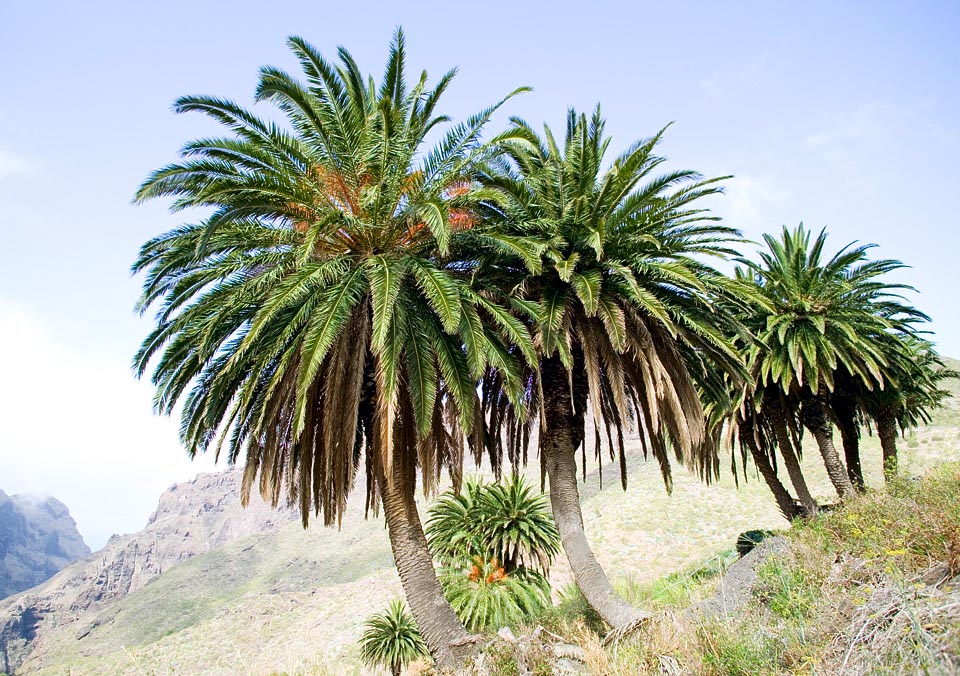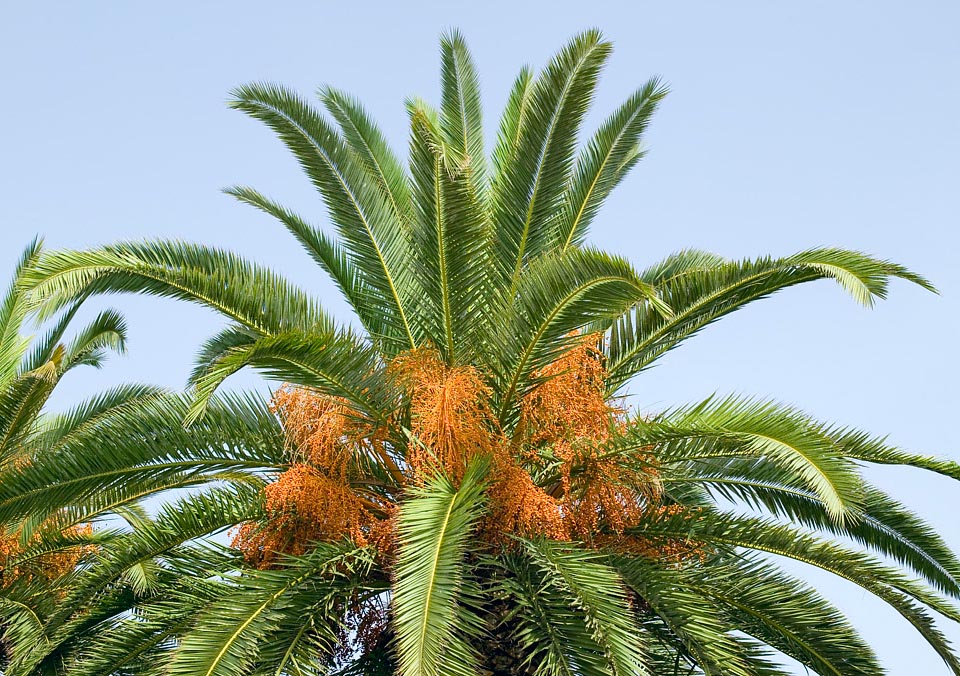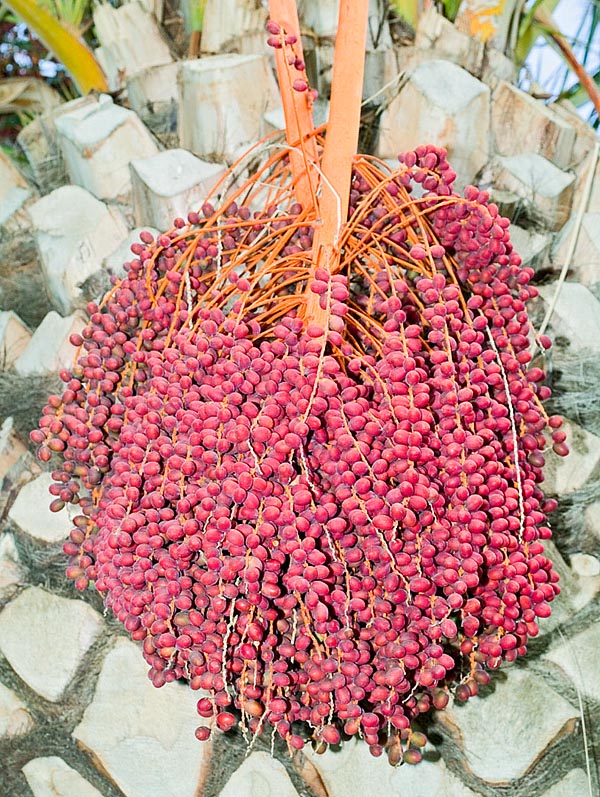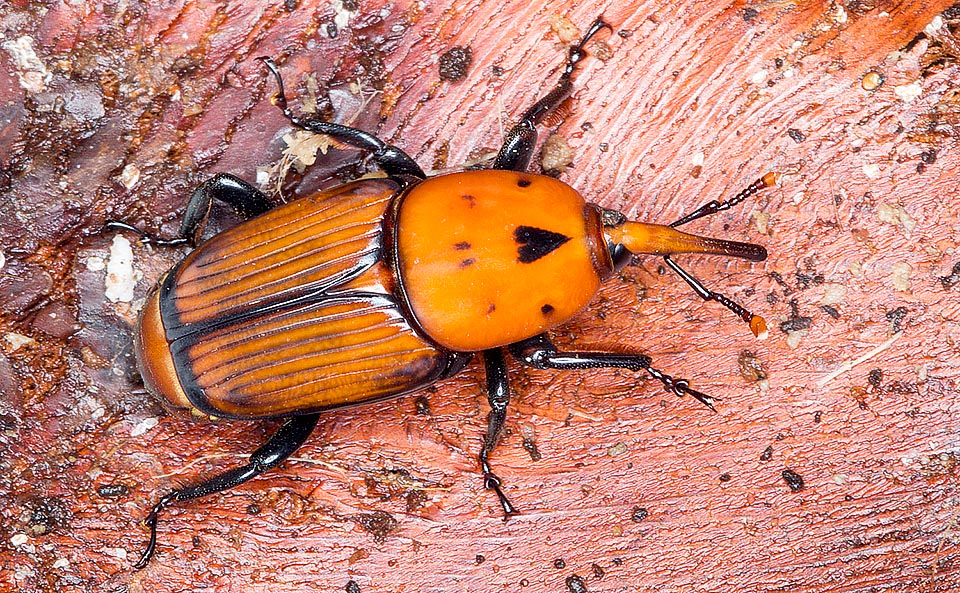Family : Arecaceae

Text © Pietro Puccio

English translation by Mario Beltramini

Phoenix canariensis in its Canaries habitat. It grows in open, and sunny positions, from the sea level up to 600 m of altitude, and well adapts to grow in various climates © Giuseppe Mazza
The name of the species refers to its place of origin: the Canary Islands.
Common names: “Palma delle Canarie”, “Fenix” (Italian); “Canary Islands Date palm”, “Pineapple palm” (English); “Dattier des Canaries”, “Palmier des Canaries”, “Palmier d’Hyères” (French); “Kanarische Dattel- palme” (Dutch); “Palmeira-das-canarias”, “Tamareira-das-canarias”, “Palmeira-tamarei- ra” (Portuguese); “Palmera canaria”, “Fénix”, “Palma canaria”, “Tamara” (Spanish).

Its imposing, dense crown, formed by more than hundred pinnate leaves, arcuate, 4-6 m long, persisting long time © Giuseppe Mazza

Specimens exist also with reddish-brown fruits, by some deemed as varieties, by others as hybrids © Giuseppe Mazza
Rigid leaflets of green colour, reduced to robust thorns at the base.
Dioecious plant (each individual carries either male or female flowers only), presents ramified inflorescences shorter than the leaves, the male flowers being of a cream-white colour, and the female ones, yellow-orange.
In the wild, the blossoming takes place in spring, and the ripening, in autumn.
The ovoid fruits, about 2 cm long, with gold yellow colour, are theoretically edible, but with very scarce and rather unpleasant pulp.
There are also individuals with reddish-brown fruits, very striking, which are considered as varieties by somebody, as hybrids by others.
The Phoenix canariensis crosses easily with the other Phoenix, particularly with the the Date palm (Phoenix dactylifera), as testifies the ample variety of hybrids with intermediate look, between the two species present in cultivation.
It reproduces exclusively by seed, which easily germinates in 100-110 days.
Due to its marked ornamental characteristics, its suitability to climates going from the temperate to the tropical, and to an ample variety of soils, even poor and semi-arid, it is widely utilized in parks and gardens, particularly in the temperate zones, where it can resist to temperature down to -8 °C.
Introduced in Europe by the second half of the nineteenth century, it has rapidly spread in all the coastal countries of the Mediterranean.
As a matter of curiosity: the first information concerning the existence of palms in the Canary Islands, is given by Pliny the Elder (23/24 - 79 AD), while relating the expedition of Numidia’s king, Juba II (Naturalis Historia).
Synonyms: Phoenix canariensis var. porphyrococca Vasc. & Franco (1948) - Phoenix cycadifolia Regel (1879) - Phoenix dactylifera var. jubae Webb & Berthel. (1847) - Phoenix jubae (Webb & Berthel.) Webb ex. H.Christ (1885).

Unluckily now this palm is seriously menaced by a beetle, the Rhynchophorus ferrugineus, that attacks also other Phoenix but loves particularly this one. It is almost impossible to make an early diagnosis, and when the parasite has well settled into the plant, there are no really effective treatments © Giuseppe Mazza
→ For general notions about ARECACEAE please click here.
